Fairy tales are not just for children.
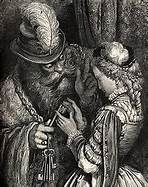 “Look into my eyes.” Gustave Dore’s Bluebeard
“Look into my eyes.” Gustave Dore’s Bluebeard
The story of Bluebeard: A man targets a female conquest. He plies her with an eight day party. Riches entice. Position and prestige allure. At first she is put off by his physical deformity. Money causes her rejection to fade. Fairy tale monsters hide in plain sight. The reader sees the harbinger of ill will. Yet, the story’s character also knows something is awry.
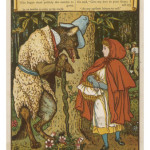 The plot of any story hinges on some question, a problem, an obstacle, but often, selected depravity. Villains are careful to cover their corruption until it is often too late for the victim. Crooked similarities between villains abound in fairy tales. In “Snow White” the witch hides poison in the apple. “Little Red Riding Hood” sees the Wolf dressed up as gramma. A troll creates a mirror distorting reality in “The Snow Queen.” How does a theological interpretation address the villain as a keeper of secrets, the crafter of deception?
The plot of any story hinges on some question, a problem, an obstacle, but often, selected depravity. Villains are careful to cover their corruption until it is often too late for the victim. Crooked similarities between villains abound in fairy tales. In “Snow White” the witch hides poison in the apple. “Little Red Riding Hood” sees the Wolf dressed up as gramma. A troll creates a mirror distorting reality in “The Snow Queen.” How does a theological interpretation address the villain as a keeper of secrets, the crafter of deception?
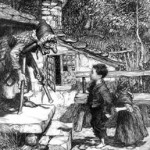 “Theological interpretation,” as does every literary theory, assumes certain beliefs. “Theology” means “study of God” accepting the notion that there is at least a supernatural world (beyond the natural world) and perhaps a supernatural order. If a transcendent order exists then original standards can be expected and established. Theological interpretive theory notices assumptions, origins, knowledge, and ethics. Five ethical assumptions begin to establish a theological interpretation.
“Theological interpretation,” as does every literary theory, assumes certain beliefs. “Theology” means “study of God” accepting the notion that there is at least a supernatural world (beyond the natural world) and perhaps a supernatural order. If a transcendent order exists then original standards can be expected and established. Theological interpretive theory notices assumptions, origins, knowledge, and ethics. Five ethical assumptions begin to establish a theological interpretation.
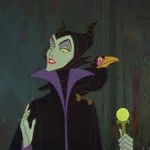 1. The nature of fairy tales presupposes right and wrong. Even in a culture of subjectivity and relativism we cannot but hope that there is innocence and that the innocence will overcome any source of evil. Fairy tales, as do all stories, depend on some standard, a basis for decision making.
1. The nature of fairy tales presupposes right and wrong. Even in a culture of subjectivity and relativism we cannot but hope that there is innocence and that the innocence will overcome any source of evil. Fairy tales, as do all stories, depend on some standard, a basis for decision making.
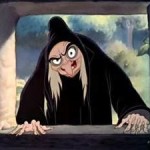 2. The villain knows enough about right or goodness to ape it. Psychopaths may have been conditioned against knowing the difference between right and wrong. Completely evil people may have a seared conscience. But characters and readers alike intuit that fairy tales villains know enough to cover his tracks.
2. The villain knows enough about right or goodness to ape it. Psychopaths may have been conditioned against knowing the difference between right and wrong. Completely evil people may have a seared conscience. But characters and readers alike intuit that fairy tales villains know enough to cover his tracks.
 3. The villain guides the trajectory of his ill intent, his basest desire. Time is on the side of the villain. In “Bluebeard” an eight day party is followed by a month of marriage. The villain then announces, “I will be away for six weeks.” In heist narratives it’s called the set up. Hidden deception morphs into a cover up leading to the trap.
3. The villain guides the trajectory of his ill intent, his basest desire. Time is on the side of the villain. In “Bluebeard” an eight day party is followed by a month of marriage. The villain then announces, “I will be away for six weeks.” In heist narratives it’s called the set up. Hidden deception morphs into a cover up leading to the trap.
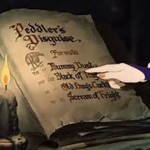 4. Even when you know the person is evil, listening long enough brings you under their spell. The young woman in Bluebeard’s tale had originally “felt a profound distaste for a man with a blue beard.” But after some time “the youngest daughter began to think that the beard of the master was not so very blue.”
4. Even when you know the person is evil, listening long enough brings you under their spell. The young woman in Bluebeard’s tale had originally “felt a profound distaste for a man with a blue beard.” But after some time “the youngest daughter began to think that the beard of the master was not so very blue.”
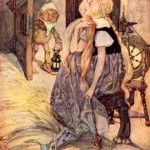 5. Does the culpability lie with the villain and the “victim”? Self-deceit is possible for everyone. Evil and the evildoer are present in villain stories but there must be one who can be lured to the dark side of deception.
5. Does the culpability lie with the villain and the “victim”? Self-deceit is possible for everyone. Evil and the evildoer are present in villain stories but there must be one who can be lured to the dark side of deception.
In fairy tales, right and wrong exist. Good and evil can be identified. Evil can be manifest not only in action but in attitude. From a theological perspective one can only speak of “villains” if a departure from goodness can be identified.
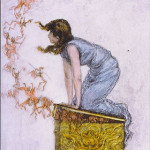 Standing alongside the story of Bluebeard, “Pandora’s Box” may be the most ancient “come hither” deception narrative. The secret of the closed container is not simply the fault of some evil ogre but includes the knowledge of an unwary yet unwise person caving to a desirous impulse. Villains may be keepers of secrets having crafted a dishonest ruse. But for evil to triumph someone must partake.
Standing alongside the story of Bluebeard, “Pandora’s Box” may be the most ancient “come hither” deception narrative. The secret of the closed container is not simply the fault of some evil ogre but includes the knowledge of an unwary yet unwise person caving to a desirous impulse. Villains may be keepers of secrets having crafted a dishonest ruse. But for evil to triumph someone must partake.
You see, deception is not simply in the eye of evil but also in the eye of the beholder.
Going back to school. Dr. Mark Eckel is taking a children’s literature course at IUPUI and loving every minute of it: villains and all. This essay is part of an assignment from this past week.

Thank you for your story Professor Eckel. I really like the part you stated, “Even when you know the person is evil, listening long enough brings you under their spell.” I am glade that you are enjoying your literature class.
Well, you know that I am a writer with a penchant for fantasy and fairy stories. That means that you can assume that I ate this post up. And I did!
The existence of a perfectly good, transcendent source of moral authority who is also a perfectly just and magnificently merciful Judge offers a great answer to the problem of evil. If there is no God, every wicked man who does a wicked thing in the darkness and is never brought to light–each of them gets away with it. But with a perfect, just, and righteous Judge no wickedness will go unpunished, whether it is punished on the body and cross of Christ or the eternal soul of the evildoer. God sees all wickedness, and even that wickedness which is never discovered by man is known by God, and punished by Him justly and righteously.
Your class sounds amazing. I’m planning to attend IUPUI to get a master’s in library science. Hopefully I’ll get to take that class!
Thanks for the post, Dr. Eckel.
Point #4 reminds us that we should be watchful for villains of all stripes, not only for ourselves (beware the spell) but for our family, friends and neighbors as well. Love thy neighbor!
“But if the watchman sees the sword coming and does not blow the trumpet, so that the people are not warned, and the sword comes and takes any one of them, that person is taken away in his iniquity, but his blood I will require at the watchman’s hand.” Ezekiel 33:6